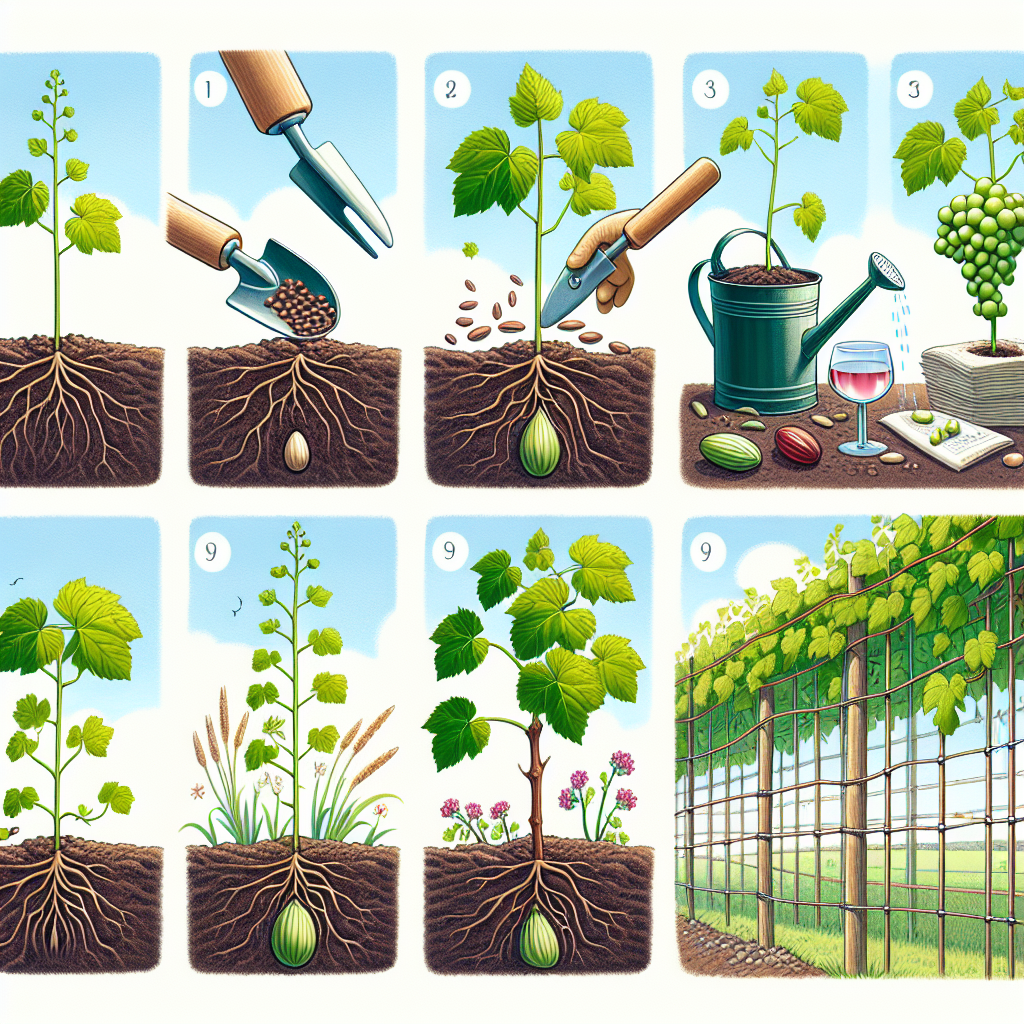
How to make a grape tree
Creating Your Own Grape Tree: A Comprehensive Guide
If you’re looking to add a unique twist to your garden, a grape tree might be the perfect project for you. Not only do these stunning structures provide a beautiful focal point, but they also yield delicious fruit. In this article, we’ll cover everything you need to know about how to make a grape tree, from selecting the right materials to the best practices for care and maintenance.
What is a Grape Tree?
A grape tree is a creative way to grow grapevines in an upright, tree-like form. This structure not only saves space but also allows for better air circulation and sunlight exposure, which can lead to healthier plants and a more bountiful harvest. By understanding the basic principles and techniques of creating a grape tree, you can enjoy both the aesthetic and practical benefits of this unique gardening approach.
Materials You'll Need
To start your journey towards creating a grape tree, gather the following materials:
- Grape Vine Cuttings: Select a variety that grows well in your region.
- Support Structure: Options include wooden posts, metal trellises, or rebar.
- Quality Soil: A good balance of sand, clay, and organic materials is preferred.
- Mulch: To help retain moisture and suppress weeds.
- Watering Can or Hose: For regular watering.
Step-by-Step Guide on How to Make a Grape Tree
Now that you have your materials, let’s dive into the step-by-step process of how to make a grape tree.
1. Selecting the Right Location
The first step is choosing the right spot for your grape tree. Look for an area that receives plenty of sunlight (at least 6-8 hours a day). Additionally, consider the following factors:
- Well-drained soil to prevent root rot.
- Protection from strong winds and extreme weather conditions.
- Accessibility for watering, pruning, and harvesting.
2. Preparing the Soil
Before planting, you’ll need to prepare the soil. Loosen the soil and mix in compost to enrich it. Here’s a quick guide:
- Clear the area of weeds and debris.
- Test the soil pH (ideally between 6.0 and 6.8).
- Add organic matter to improve soil texture and fertility.
- Level the soil and create rows for planting.
3. Building Your Support Structure
Your grape tree will need a sturdy support to climb and grow. Here’s how to build it:
- Wooden Posts: Use treated wood that is at least 8 feet tall. Set them 3-4 feet into the ground for stability.
- Trellises: Metal or wooden trellises should be at least 5-6 feet high to allow the vines to grow upwards.
- Rebar: If using rebar, space them evenly and tie them together securely to form a strong framework.
4. Planting the Grape Vine Cuttings
Once your support structure is in place, it’s time to plant your grape vine cuttings. Follow these steps:
- Dig holes approximately 18 inches apart (or according to your support design).
- Place your cuttings in the holes, ensuring the roots are spread out.
- Cover the roots with soil and firm lightly.
- Water thoroughly to remove any air pockets.
5. Training the Vines
As your vines begin to grow, they will need to be trained to climb the support structure. This process involves:
- Gently tying the vines to the support with soft ties (such as cloth strips or garden twine).
- Regularly checking the growth and adjusting ties as necessary.
- Encouraging lateral growth by pinching back the tips of the primary stems.
6. Watering and Fertilizing
Proper watering and nutritional support are crucial for the healthy growth of your grape tree. Adhere to these guidelines:
- Water the plant 1-2 times a week, allowing the top layer of soil to dry out in between.
- Utilize organic fertilizers high in potassium and phosphorus during the growing season.
- Avoid over-fertilizing as this can lead to poor fruiting.
Maintenance and Care
Now that your grape tree is established, ongoing maintenance is essential for continued health and productivity. Here are some key aspects to consider:
Pruning
Pruning is crucial for shaping your grape tree and promoting better fruit production. Here’s how to prune effectively:
- Perform pruning in late winter while the plant is dormant.
- Remove any dead or diseased wood.
- Thin out crowded branches to improve air circulation.
- Cut back canes that have produced fruit to encourage new growth.
Pest and Disease Management
Keeping your grape tree healthy requires vigilance against pests and diseases. Strategies include:
- Regular inspection of leaves and stems for any signs of pests.
- Utilizing organic pesticides if infestations occur.
- Practicing crop rotation and good sanitation to minimize disease risks.
Harvesting Your Grapes
The joy of creating a grape tree culminates in the delicious harvest. Here's how to know when your grapes are ready:
- Look for uniform color and fullness of the grapes.
- Taste a sample—grapes should be sweet and juicy when ripe.
- Use proper tools to avoid bruising the fruit during harvest.
Conclusion
Creating a grape tree can be a rewarding experience, both visually and deliciously. By following this comprehensive guide on how to make a grape tree, you’ll be well on your way to enjoying your own beautiful and fruitful garden feature. Remember that patience and consistent care are key to successful grape production, so invest the time and effort to reap the flavorful rewards!
“Gardening is a way of showing that you believe in tomorrow.” – Unknown
With the right knowledge and commitment, your vineyard awaits. Happy gardening!
By Guest, Published on August 10th, 2024